The popularity of electric vehicles has been steadily increasing over time. With their minimal maintenance requirements, eco-friendly nature, and cost-effectiveness, more people are now opting for e-bikes.
If you've already embraced the electric bike trend and are searching for maintenance tips for your shiny new ride, this guide is tailored for you. Whether you're preparing in advance with knowledge of e-bike maintenance or addressing performance issues with a six-month-old scooter, these maintenance insights can help prolong its life and enhance its performance. Let's dive in!
Why Is Electric Scooter Maintenance Important?
Electric scooters consist of intricate mechanisms and multiple small components. For a smooth and hassle-free riding experience, all parts must function efficiently. Regular maintenance offers several advantages, including reduced issues and improved bike performance. Key reasons to maintain your e-scooter include:
- - Increased familiarity with your e-bike
- - Elimination of potential hazards
- - Enhanced reliability of your scooter
- - Reduced repair costs
- - Improved safety
Benefits of Maintaining Your Electric Scooter
Regular maintenance of your e-scooter comes with many benefits, such as:
- - Removal of accumulated dust and dirt
- - Extended battery life
- - Prevention of tire-related problems
- - Increased lifespan of your e-bike
- - Enhanced scooter efficiency
Routine Maintenance Checklist for Electric Scooters
1. Battery Maintenance
Keeping your electric scooter in excellent condition ensures a smooth, safe ride while extending its lifespan. In this guide, we’ll share six essential tips to help you maintain your electric scooter for optimal performance.
1.1. Proper Battery Charging
Maximize battery life and maintain efficiency by following these key charging practices:
- - Allow your scooter to cool down before charging or storing it.
- - Avoid depleting the battery completely to prevent long-term damage.
- - Charge your battery promptly when its power level is low.
- - Always use the original or manufacturer-recommended charger for safe, efficient charging.
1.2. Secure Battery Storage
Protecting your battery during storage is vital for its longevity. Always store your electric scooter in a cool, dry place to avoid extreme temperatures and humidity, which can degrade battery performance. For extended storage periods, like during winter, ensure the battery is charged to at least 40%.
1.3. Proper Scooter Cleaning
Regular cleaning prevents dirt buildup that can impact performance and cause wear. Keep these cleaning tips in mind:
- - Use a soft cloth or sponge with mild soap to clean the exterior, avoiding harsh chemicals that could damage the surface.
- - Refrain from using excessive water or high-pressure cleaners, which can harm electronic components.
- - Securely cap the charging port before cleaning to avoid water damage.
- - Take special care of sensitive areas like the display screen and charging port.

1.4. Pre-Ride Inspection
Conducting a quick pre-ride check ensures your scooter is safe and ready to ride. Pay attention to:
Tires: Look for signs of wear, tears, or punctures, and maintain the recommended tire pressure. Properly inflated tires help prevent issues like reduced speed, skidding, faster battery drain, and tire bursts.
Brakes: Inspect the brakes to confirm smooth operation. Check brake pads and discs for wear or damage, and address any unusual noises or squeaks to ensure reliable performance.
1.5. Keep a Spare Key Secure
A spare key is invaluable in case of emergencies or misplaced keys. Store it in a secure, easily accessible location. Losing all your keys could require replacing the entire scooter throttle. Additionally, if your scooter has a separate battery key, safeguard it to avoid complications.
1.6. Avoid Riding in Wet Conditions
Since electric scooters are electronic devices, exposure to water can cause malfunctions. To protect your scooter:
- - Avoid riding in wet or rainy conditions whenever possible.
- - If wet conditions are unavoidable, choose a scooter with a high waterproof rating.
By following these maintenance tips, you’ll ensure your electric scooter stays in great shape, offering reliable performance and a safe riding experience for years to come.
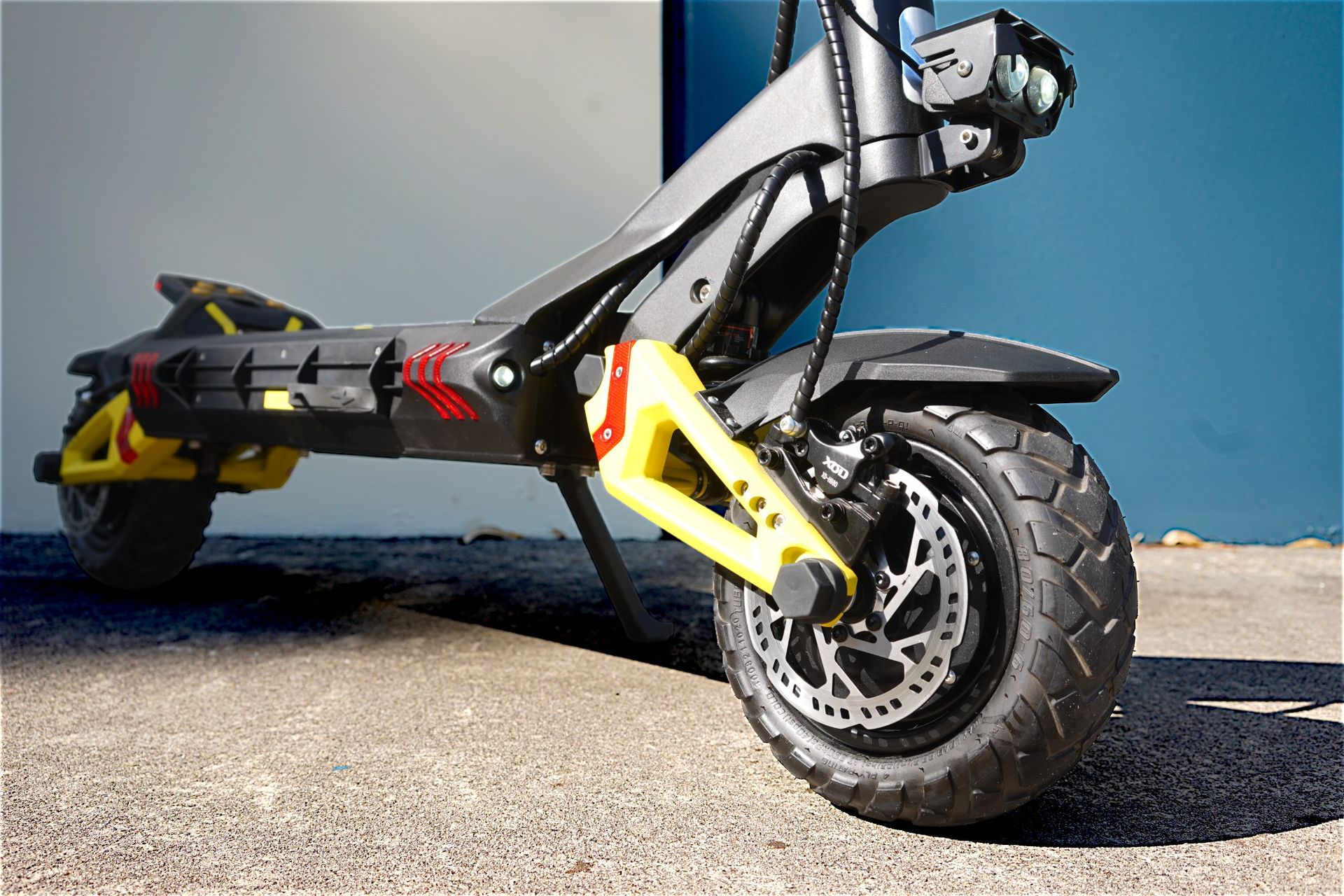
2. Tire Maintenance
Proper tire maintenance is essential to ensure your electric scooter remains safe to ride and performs at its best. Neglecting this aspect can lead to several issues, including reduced grip, decreased range, increased rolling resistance, and even accidents.
Reduced Grip: Maintaining tire grip is crucial for control, particularly in wet or slippery conditions. Poor maintenance can cause uneven tire wear, diminishing grip and making it harder to steer. Reduced grip also increases stopping distances, complicating emergency braking.
Decreased Range: Tire condition significantly impacts your scooter's range. Underinflated tires create more rolling resistance, forcing the motor to work harder and draining the battery faster. This not only decreases range but also necessitates more frequent charging.
Increased Rolling Resistance: Rolling resistance refers to the effort needed to keep tires moving on a surface. Poorly maintained tires, such as those that are underinflated or worn, increase resistance, leading to slower speeds and reduced range.
Impaired Braking: The state of your tires directly affects braking performance. Worn or underinflated tires reduce road traction, increasing stopping distances and the likelihood of accidents. Additionally, damaged tires can cause vibrations and negatively impact brake system efficiency, making rides uncomfortable and hazardous.
Accidents: Worn or damaged tires are a major safety risk, potentially leading to blowouts or flats that can cause loss of control and accidents. Regular maintenance reduces such risks, ensuring safer rides.
2.1. Eight Tips for Maintaining Electric Scooter Tires
By understanding the importance of tire maintenance and the risks of neglecting it, you can keep your scooter in top condition and avoid potential issues on the road.
1. Store Your Scooter Properly: Keep your scooter in a cool, dry place, away from direct sunlight or heat. Avoid leaving it unused for long periods, as this can cause flat spots on the tires.
2. Use Tire Sealant: For pneumatic tires, applying tire sealant to inner tubes can seal small punctures, reduce flats, and extend tire life cost-effectively.
3. Check Tire Pressure Regularly: Maintaining proper tire pressure prevents issues like decreased grip, increased resistance, and premature wear. Use a tire pressure gauge to ensure your tires match the manufacturer's recommendations. Keep in mind that pressure may fluctuate with temperature, so check more often during extreme weather.
4. Invest in High-Quality Tires: Durable, high-quality tires offer better grip and resistance to wear, enhancing your scooter's performance and safety while reducing maintenance needs.
5. Inspect Tires for Damage: Regularly examine your tires for signs of wear, such as cuts, punctures, cracks, or bulges. Honeycomb tires, like those on the Unagi Model One, are more durable but still require routine inspections. Catching damage early can save on repair costs and prevent safety hazards.
6. Rotate Tires: Switching front and rear tires helps distribute wear evenly, extending their lifespan. Rotating every few hundred miles reduces uneven wear caused by factors like braking habits and weight distribution.
7. Avoid Overloading: Exceeding your scooter's weight limit puts excessive pressure on the tires, leading to faster wear. Stick to the recommended weight limit to avoid unnecessary strain.
8. Clean Tires Regularly: Use a mild detergent and soft brush to clean your tires, removing dirt and debris that can accelerate wear. Rinse thoroughly to prevent damage.
3. Brake Maintenance
Brakes are a vital safety feature and must always be in excellent working condition. While brake failures are uncommon, routine inspections are essential. Before each ride, test the brakes by pressing them while the scooter is stationary. Then, try pushing the scooter forward; if it doesn’t move, the brakes are functioning correctly. For routine inspections, check brake pads for signs of wear and replace them if they appear thin or damaged. Inspect brake cables for fraying or corrosion, and replace them as needed. Adjust disc brakes using the calibration screw or bolt, ensuring they are neither too tight nor too loose.
Can you replace scooter brakes?
Yes, you can replace disc and foot brakes, as their components are generally accessible. However, replacing drum brakes is more challenging since they are enclosed within the scooter wheel hub. Regenerative and electronic brakes cannot be replaced, as they are integrated into the scooter's electrical system.
What if you don’t feel comfortable replacing or repairing brakes yourself?
If you’re unsure about handling repairs, check if your scooter’s warranty covers brake maintenance. Depending on the brand and distributor, you may need to send the scooter back for repairs or request parts to complete the replacement yourself. Alternatively, visit a local PEV or bicycle shop, as they often provide brake maintenance services
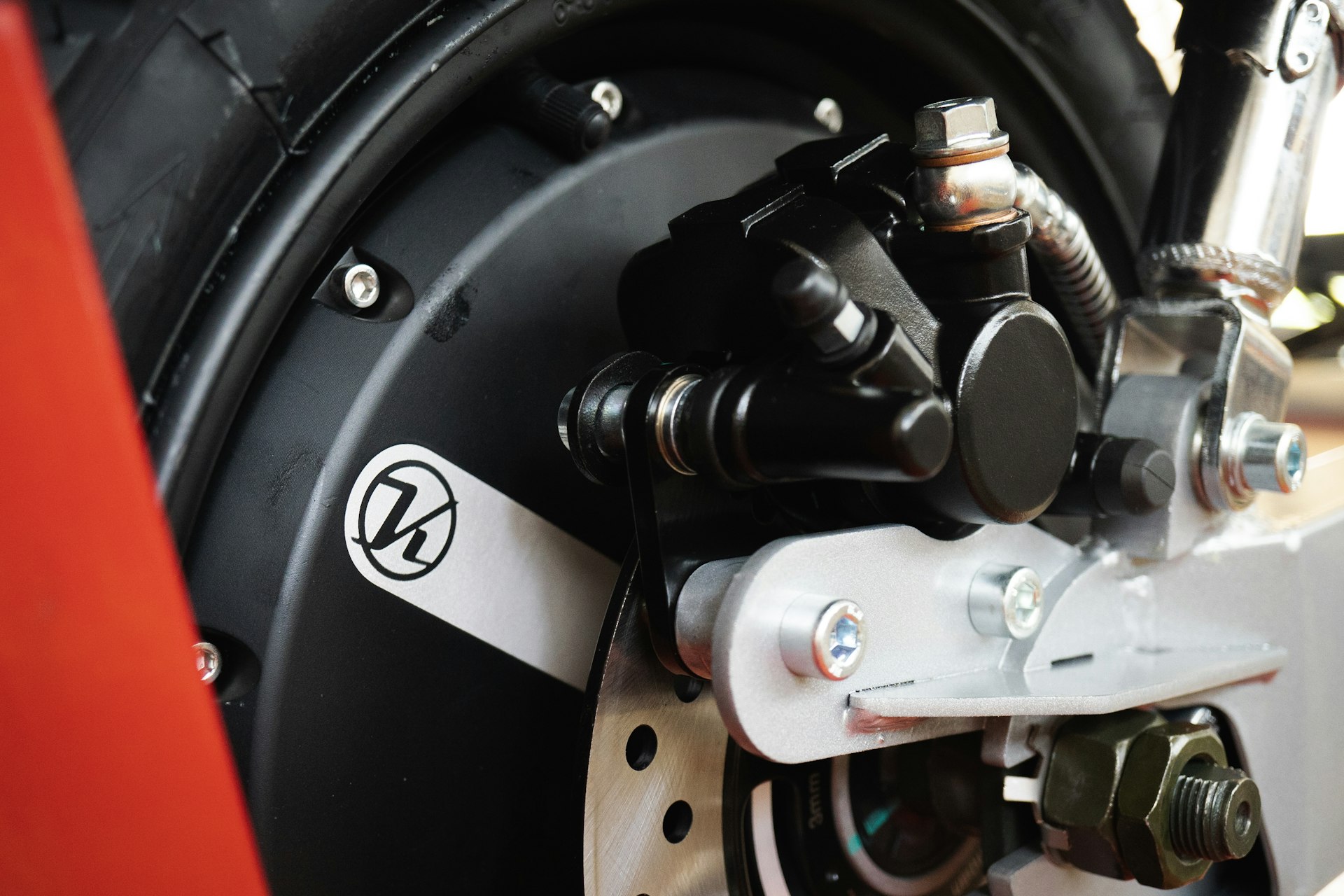
4. Suspension Maintenance
The suspension connects your e-scooter to the ground, ensuring safety, comfort, and a smooth ride on uneven surfaces. Proper maintenance depends on the type of suspension. For rubber or spring suspensions, you should tighten the screws securely to prevent them from loosening during rides. For hydraulic suspensions, you should regularly replace the oil in the suspension tube, ideally with professional assistance. Maintaining your suspension is essential to prolong the lifespan of a folding scooter for adults. Follow these steps:
4.1. Regularly Inspect the Locking Screws
If the suspension feels stiff or loose, check the screws for any issues. Strange noises coming from the suspension are often a sign that the screws are improperly adjusted. Inspect the screws monthly to ensure they are neither too loose nor overly tightened.
Suspension components can loosen over time due to regular riding. Adjusting them is straightforward—use a universal kit or screwdriver to make minor tweaks, then test the ride to confirm smooth operation. With overtightened screws, the suspension will feel overly stiff on bumps. With loose screws, you may experience instability on turns or rough terrain.
If stiffness persists after adjustment, the spring might need replacing. This task requires precision and may need professional help. Be sure to consult the manufacturer’s manual to confirm the correct spring dimensions. A poorly fitting spring will compromise the suspension.
4.2. Lubrication
During rides, the coil repeatedly moves up and down. Manufacturers pre-grease this part for smooth operation, but it may dry out over time. If you hear unusual noises over bumps, the shock absorber likely needs lubrication. A dry suspension can lead to further damage, so keeping it well-lubricated is crucial.
4.3. Cleaning
Hydraulic shock absorbers, in particular, require regular cleaning after off-road rides. Dirt and debris can scratch the oil seal, potentially causing irreversible oil leakage. Unlike hydraulic brakes, lost oil cannot be replenished, so the damaged set may need replacement or be used as a standard spring shock absorber.
After extended rides, remove dirt and mud with warm water and a lint-free cloth or soft brush. Avoid using solvents, degreasers, detergents, or chemicals, as these can damage the shock absorber and void its warranty.
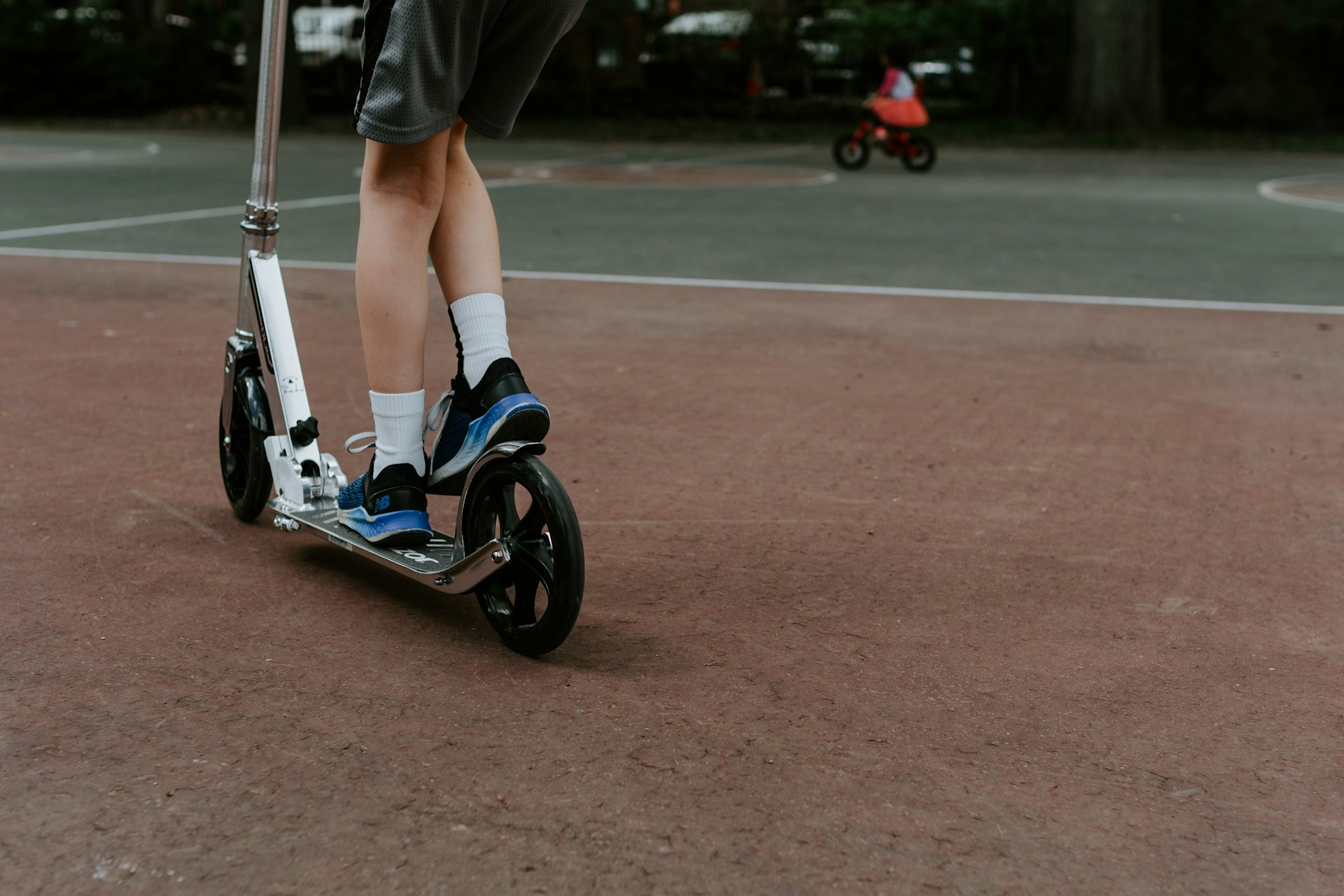
Guide for Lubricating the Shock Absorber
To access the shock absorbers, fold the electric scooter. Apply grease or lubricant sparingly using a spray can—excessive lubricant can cause leaks. Lubricate the shock absorbers every six months or after 30 hours of riding. This maintenance routine also applies to all moving parts of the scooter for optimal performance.
If your scooter is stored for the winter, prolonged inactivity may degrade the grease quality. If you hear unusual sounds from the suspension, apply lubricant first. If the noise persists, it could indicate a deeper issue requiring further attention.
5. Electrical System Maintenance
One of the most essential components of an e-bike that requires consistent care and attention is its electrical system, particularly the motor. Consider the following steps to extend the life and efficiency of your e-bike’s motor:
- Protect the motor from moisture and heat: Ensure the motor remains dry to prevent rusting. While most e-bike motors can tolerate light water exposure if they dry quickly, prolonged exposure to moisture can lead to corrosion. During rainy or humid conditions, take extra precautions to safeguard the motor and avoid riding through puddles or wet areas.
- Prevent overheating: Overheating can cause the motor to malfunction. If riding in extremely hot weather, allow the motor to cool down periodically. Watch out for unusual smells or strange noises, as these can indicate overheating. To avoid this issue, park the bike in a shaded, safe location and refrain from leaving it under direct sunlight.
- Store in optimal conditions: Keep your e-bike in a well-ventilated area with a stable, moderate temperature. Extreme heat or cold can cause permanent damage to the motor. Aim to store it in a place where the relative humidity is below 60%.
6. Cleaning and Lubrication
Before cleaning your electric scooter, proper preparation is essential. Gather the necessary supplies, which include a damp cloth or soft sponge, water, mild detergent, a toothbrush or a small cleaning brush and a bucket.
Make sure the scooter is turned off and unplugged before starting. If possible, remove the battery; if not, ensure water doesn't come into contact with it. Conduct a visual inspection to identify any dirt or debris that might cause damage. Remove these carefully, avoiding scratches on the scooter frame. A toothbrush is particularly useful for cleaning, as its soft bristles won’t cause lasting damage.
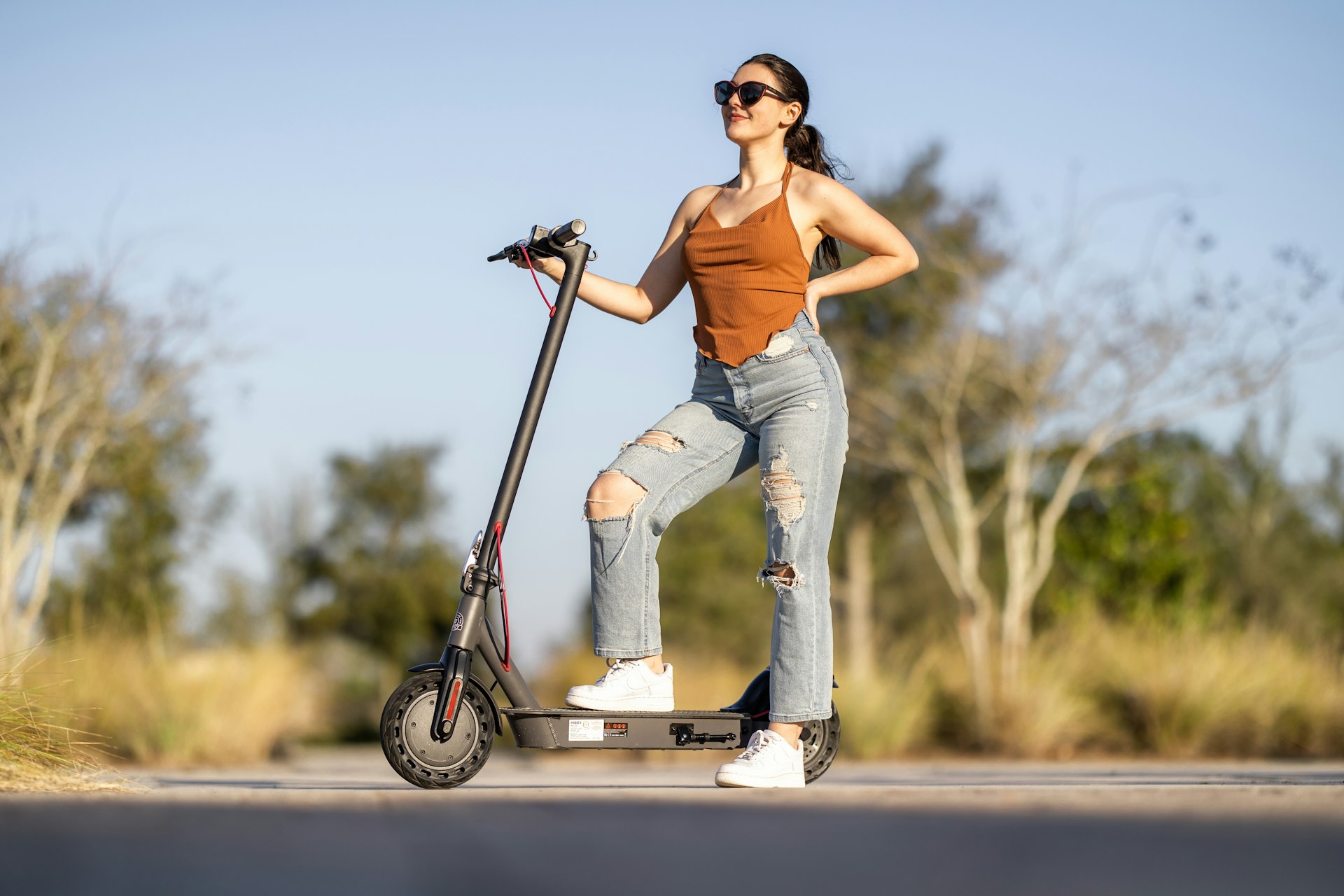
Cleaning the Scooter
After removing visible dirt and debris, inspect the scooter for grime in hard-to-reach areas. Avoid using excessive water during cleaning—there’s no need to drench the scooter. Instead, use a damp microfiber cloth with a mild detergent, which is safe for the electronic components.
A toothbrush can help remove grime from tight spots, while a cloth works well for cleaning the frame. Be thorough, reaching all areas, including handlebars, wheels, and brakes. For stubborn stains, you might consider using snow foam. If you do, ensure the product is designed for e-scooters.
Drying and Maintenance
Once your scooter is clean, it’s time to dry it thoroughly and perform maintenance. Since water and metal can lead to rust and corrosion, drying the scooter completely is crucial for longevity.
Use a dry cloth to eliminate moisture, paying extra attention to hidden areas prone to long-term damage. Ensure the scooter is fully dry before focusing on components like wheels and brakes.
Cleaning the Wheels
Electric scooter wheels tend to accumulate dirt and debris, so regular cleaning is vital. If the wheels are removable, take them off to protect other components, though leaving them on is fine too.
Use a brush dipped in soapy water to gently clean the wheels, then rinse with clean water and dry them thoroughly.
Take this opportunity to inspect the wheels for issues and check tire pressure. This dual-purpose approach saves time and helps you catch potential problems early.
Lubricating Brakes and Axles
Apply lubricant to moving parts like brakes, axles, and wheels to ensure smooth operation and eliminate squeaky noises. Car wax is another excellent option for protecting the scooter, as it effectively repels dirt and grime.
If you clean your scooter regularly and stick to a maintenance routine, you’ll extend its lifespan and enhance your riding experience. However, even minor mistakes can affect its performance. Here are some tips to keep your scooter in top shape:
- Be cautious when drying: Avoid using heat sources like blow dryers, which can damage sensitive areas. Instead, use a fan or air compressor on a low setting to dry the scooter safely.
- Check for loose parts: Regularly inspect screws and components to ensure they’re secure. Loose or broken parts can lead to accidents, but quick checks can prevent issues and keep you and others safe.
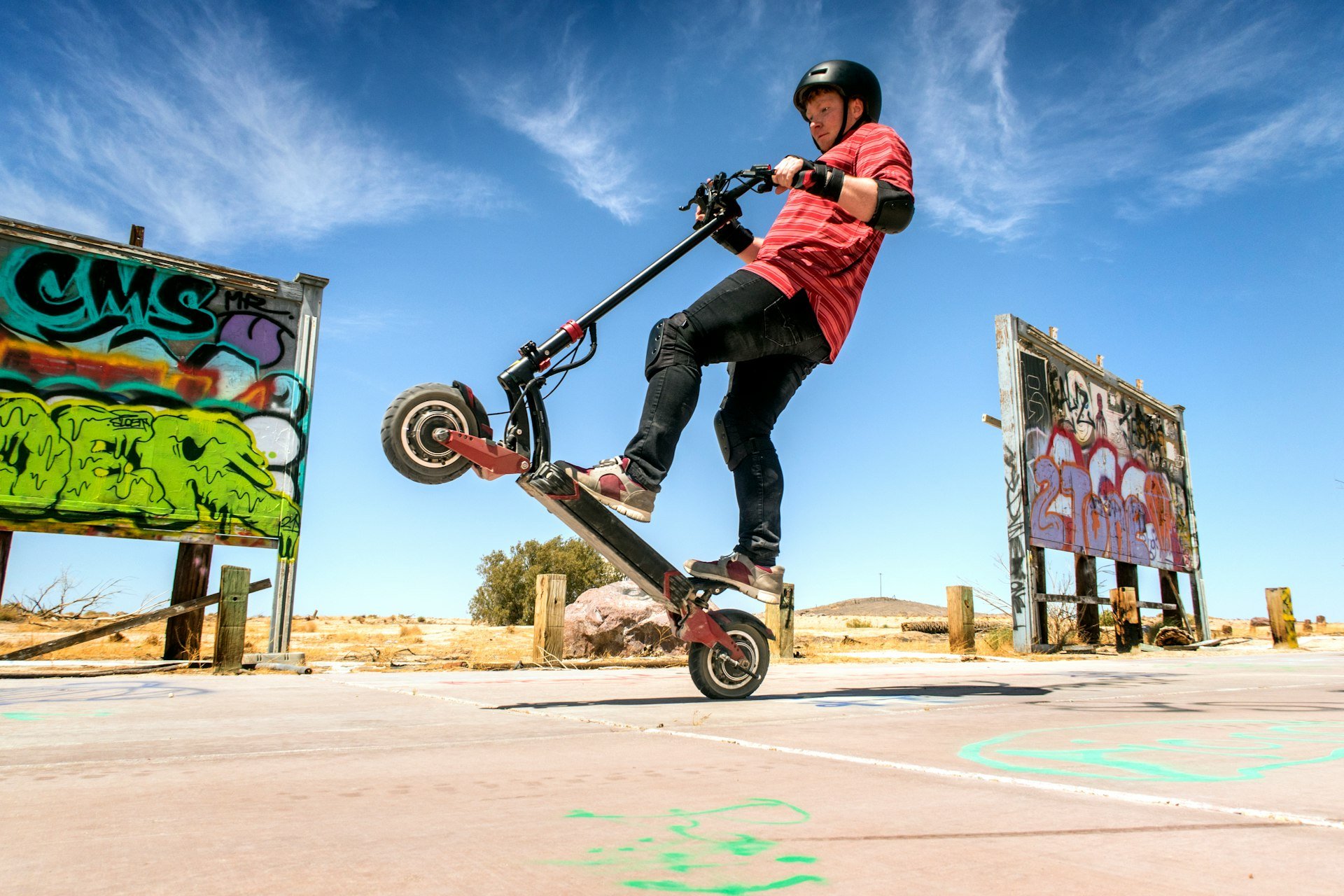
7. Safety Checks
Routine safety inspections are crucial for a secure riding experience. Regularly check the brakes, tires, handlebars, and motor.
Safety Guidelines:
- - Wear appropriate safety gear at all times.
- - Perform a thorough pre-ride inspection.
- - Get familiar with the controls of your e-scooter.
- - Adhere to local laws and regulations.
Electric Scooter Battery Dos and Don’ts
- - Carefully read and follow installation instructions.
- - Use the charger provided by the manufacturer.
- - Charge the battery in a well-ventilated, shaded location.
- - Store the battery in a cool, dry environment.
- - Clean the battery with a dry cloth and check for any loose connections.
- - Do not leave the battery uncharged for more than two days.
- - Avoid dropping, puncturing, or using abrasive materials on the battery.
- - If the battery overheats or shows signs of bulging, immediately move it away from flammable items.
Long-Term Electric Scooter Maintenance Tips
- Keep it clean: Regular cleaning helps prevent dust accumulation.
- Charge consistently: Avoid leaving the battery uncharged for long periods.
- Monitor tire pressure: Ensure tires are inflated to the recommended pressure.
- Avoid wet conditions: While water-resistant, excessive exposure to rain can damage the scooter.
Safety Considerations:
- - Park responsibly to avoid obstructing others.
- - Stay alert and practice riding defensively.
- - Avoid riding on sidewalks to ensure pedestrian safety.
- - Understand and comply with local traffic laws.
Electric Scooter Maintenance 101